The 10 Best Strategy Games of the Last 10 Years.
June 18, 2020 | 10:00
Companies: #blizzard #firaxis #klei-entertainment #mode-7 #paradox-interactive #subset-games #the-creative-assembly
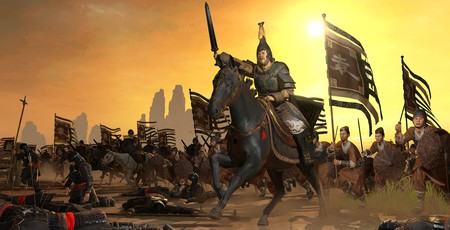
More than any other genre, the PC is the home of the strategy game. From Populous to Command and Conquer to Total War, PC gaming has sent countless tiny men and women live, work and die at the click of a mouse button.
But strategy games have changed a lot in the last decade or so. The genre has grown and diversified enormously, expanding to include life-consuming grand strategies like Crusader Kings and tiny, experimental indie experiences like Into the Breach. Former titans of the genre like Real Time Strategy have fallen from their pedestals, while the previously obscure turn-based-tactics genre has exploded in the wake of 2012’s X-COM: Enemy Unknown.
So in this article, we’ll celebrate the best that strategy gaming has delivered over the course of the last ten years. Note that while our definition of “strategy” is fairly broad, we won’t be including any management games in the article. By this point, those are functionally a different genre, which we’ll cover in a separate rundown at some point in the future.
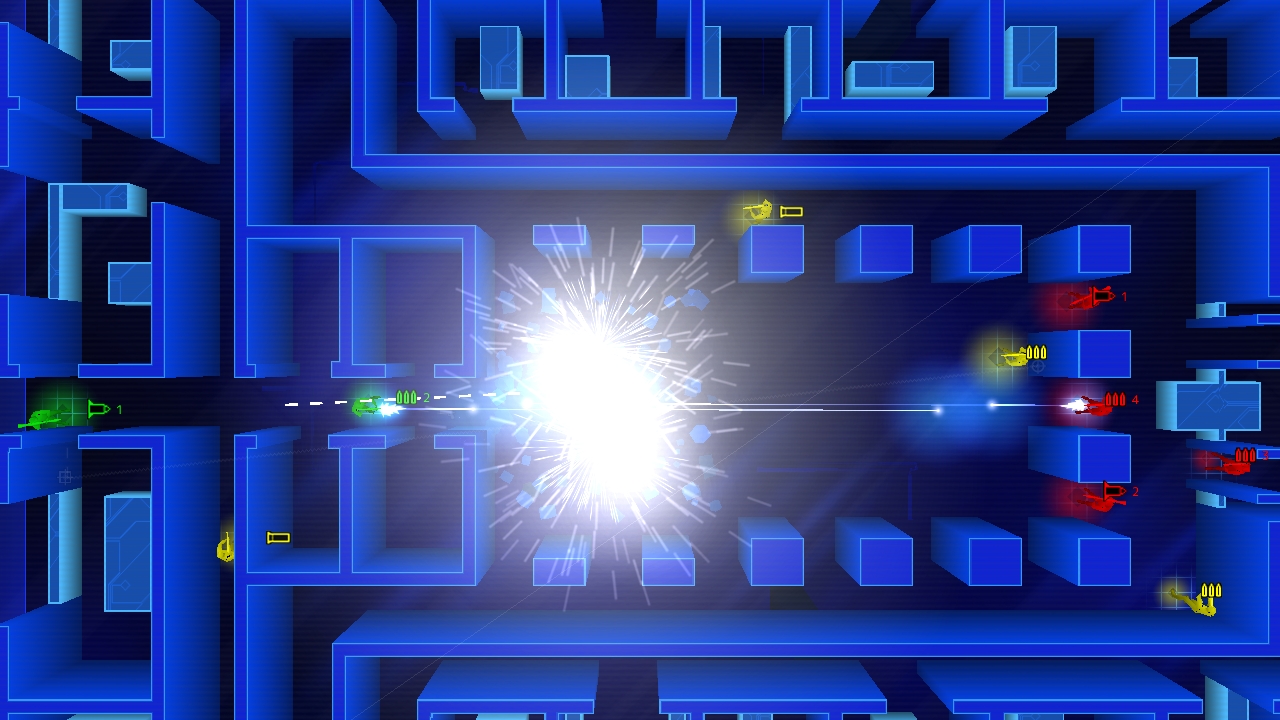
10. Frozen Synapse
Released back in 2011, Frozen Synapse is one of the more original concepts for a strategy game. Its basic concept sees two special forces teams squaring off inside ice-blue building blueprints viewed from the top-down, with each player plotting move and fire orders for their squad to be executed at varying times.
Neither turn-based nor real-time, Frozen Synapse’s action takes place in five-second increments. Player cannot see what moves their opponent is making, but they can try to predict those moves by plotting out potential enemy team manoeuvres themselves. You need to try to figure out which direction they might move their soldiers, the angles at which they might shoot, even whether they might pause at certain points before continuing their order.
What results from this is a fantastically captivating guessing-game. You might think you know what your opponent is going to do, but what if they also think you think that? Should you therefore second-guess them and opt for a completely different tactic? But what if they’ve third-guessed you? Oh no, my brain…
All of this makes Frozen Synapse one of the most captivating small-scale strategy games around. A sequel was released in 2018, boasting a slicker version of the original game’s combat with a much broader strategy campaign over the top. It received mixed reviews on launch due to bugs, but may be worth a revisit now.
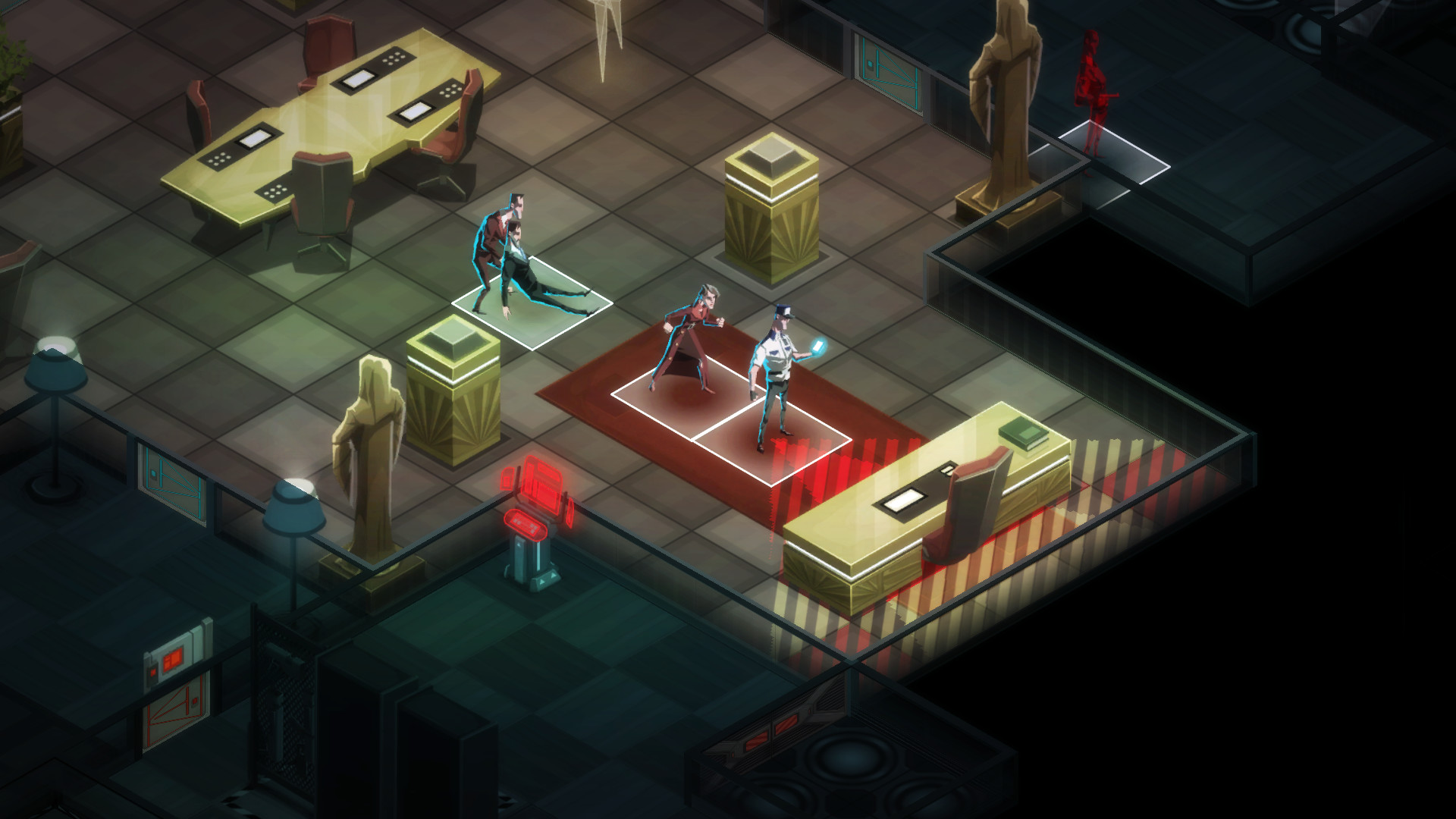 9. Invisible, Inc
9. Invisible, Inc
One of the earliest games to jump on board the X-COM tactics train (and also one of the best), Invisible, Inc is a turn-based spy-‘em-up that sees your team of ragtag espionage agents using their sneaking and hacking skills to steal from powerful mega-corporations.
Invisible, Inc is a masterclass in tension-ratcheting systems design. Each mission is randomly generated, requiring you to complete your objective and then locate an exit elevator in order to complete the mission. Yet despite your spies’ expertise, the security systems of the corps you infiltrate mean you can never go completely unnoticed. The longer you spend in a mission, the more the alert level rises, and the harder the mission becomes to complete.
You never know exactly where the exit elevator is, so you need to balance the extent to which you explore with the need to finish the objective and escape. At the same time, across the campaign you only have a total of 72-hours before you must attempt the final mission, so you must also ensure you’re sufficiently prepared to do that.
The result is a thrilling balancing act between completing missions thoroughly and getting them done efficiently. Add to that Klei’s typically fantastic art, a wonderful range of spy gadgets, and a fascinating AI metalayer that lets you hack into various corporation subsystems, and you’ve gone one of the slickest and most inventive tactics games around.
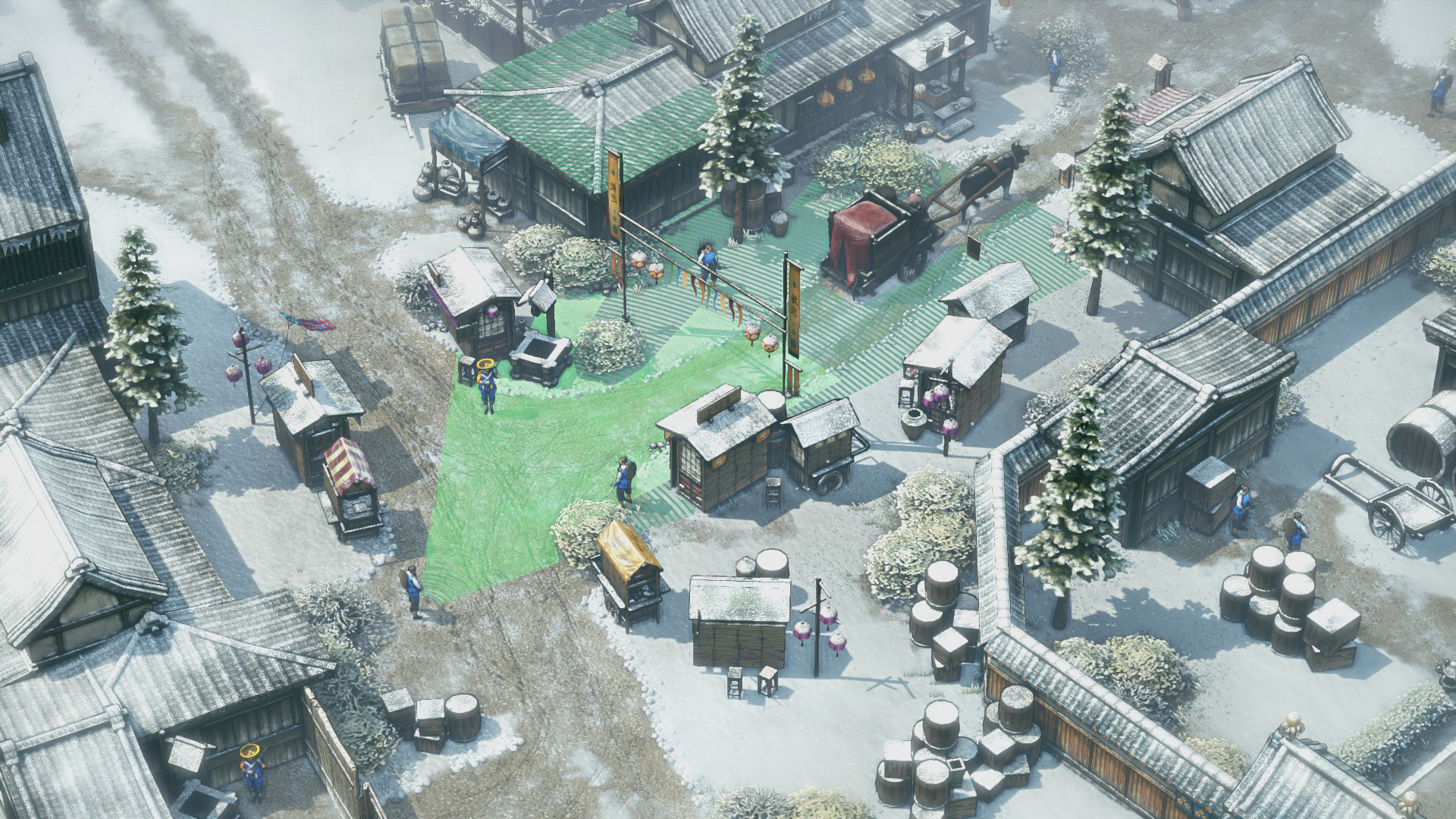 8. Shadow Tactics: Blades of the Shogun
8. Shadow Tactics: Blades of the Shogun
X-COM may be the dominant influence on modern tactics games, but it isn’t the only game in town. Shadow Tactics: Blades of the Shogun takes its cues from 1999’s uber-challenging tactics game Commandos: Behind Enemy Lines. Rather than taking place in World War II, however, it switches the action to Feudal Japan, putting you in control of a motley crew of talented Ronin.
There are many elements that make Shadow Tactics so scintillating, from its captivating story to its stunning art, through its cleverly designed characters, each designed to pick specific locks in the game’s puzzle-box. These include Hayato the Ninja, master of stealth and Mugen the Samurai, an expert in sword-combat.
But what marks Shadow Tactics out from other tactics games currently around is its commitment to representing guard AI. If a guard spots you, they won’t simply get suspicious, they’ll immediately raise the alarm. If they see footprints in the snow, meanwhile, they’ll follow them to where they lead. This means you really have to think carefully about your movements and actions, as even the smallest slip-up can obliterate your mission.
Shadow Tactics is bold and uncompromising in classic Commandos style, but the rewards for solving its tactical puzzle-box are enormous.
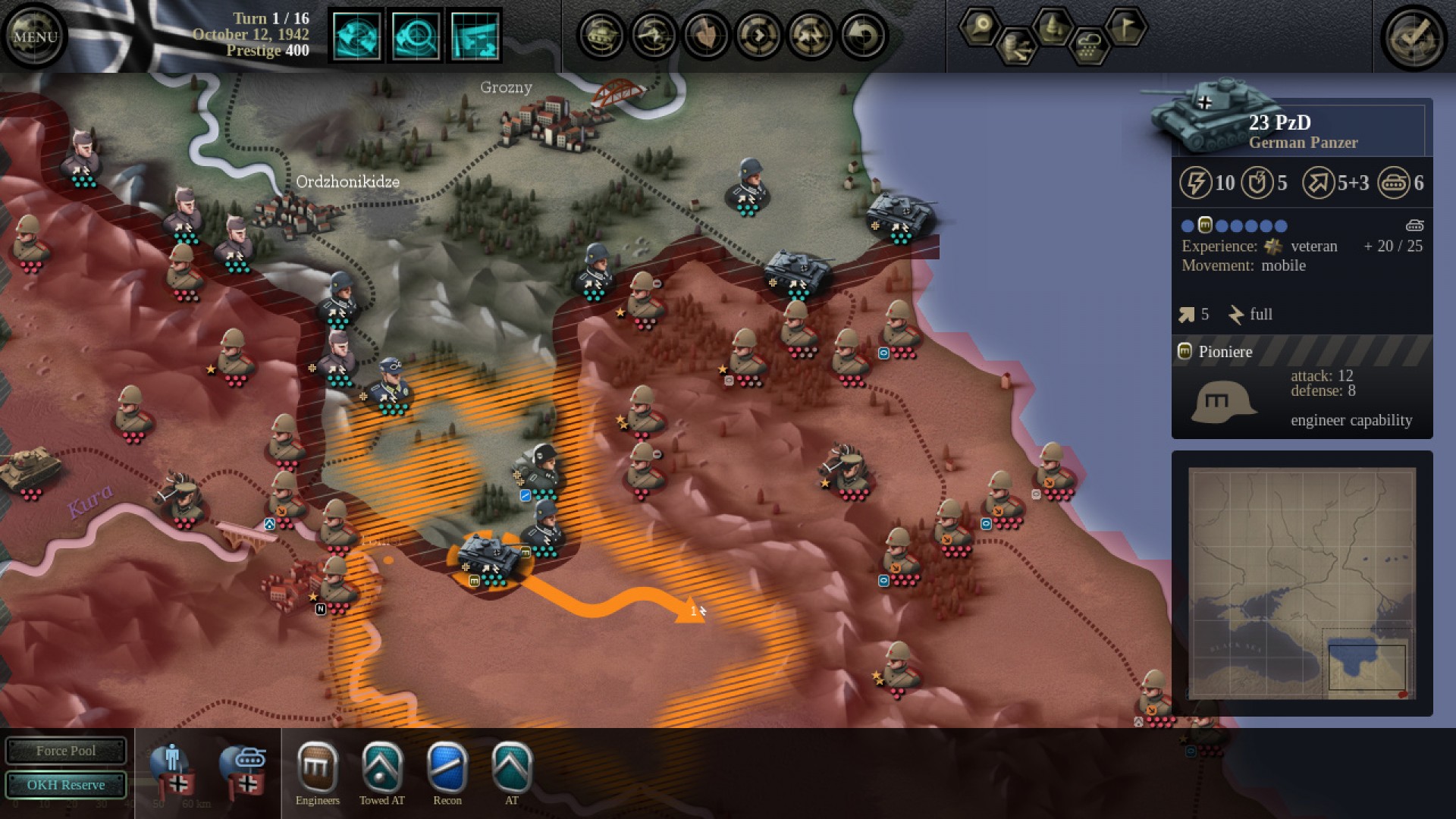
7. Unity of Command
If you’ve always liked the idea of wargaming but found the hobby to be less accessible than the Pope’s trousers, then Unity of Command is the game for you. This brilliantly designed WWII strategy game has all the Panzers and partisans you could ask for, but in a svelte and easily comprehensible package. Letting you play as either the Wehrmacht or the Red Army during Nazi Germany’s invasion of the Soviet Union, its brilliantly structured campaign carefully guides you along the road to becoming the ultimate armchair general.
Unity of Command’s key feature is that beating the enemy isn’t simply about smashing them with the biggest hammer, but manoeuvring your hammer in such a way that the head of their hammer falls off on its own. By carefully flanking and getting behind you can cut off chunks of their army from their supply-line. This prevents those units from attacking after a couple of turns and ultimately nullifies them completely. In this way, the game captures the sweeping combined-arms strategies of World War II, but without being as cumbersome as a Tiger I Tank
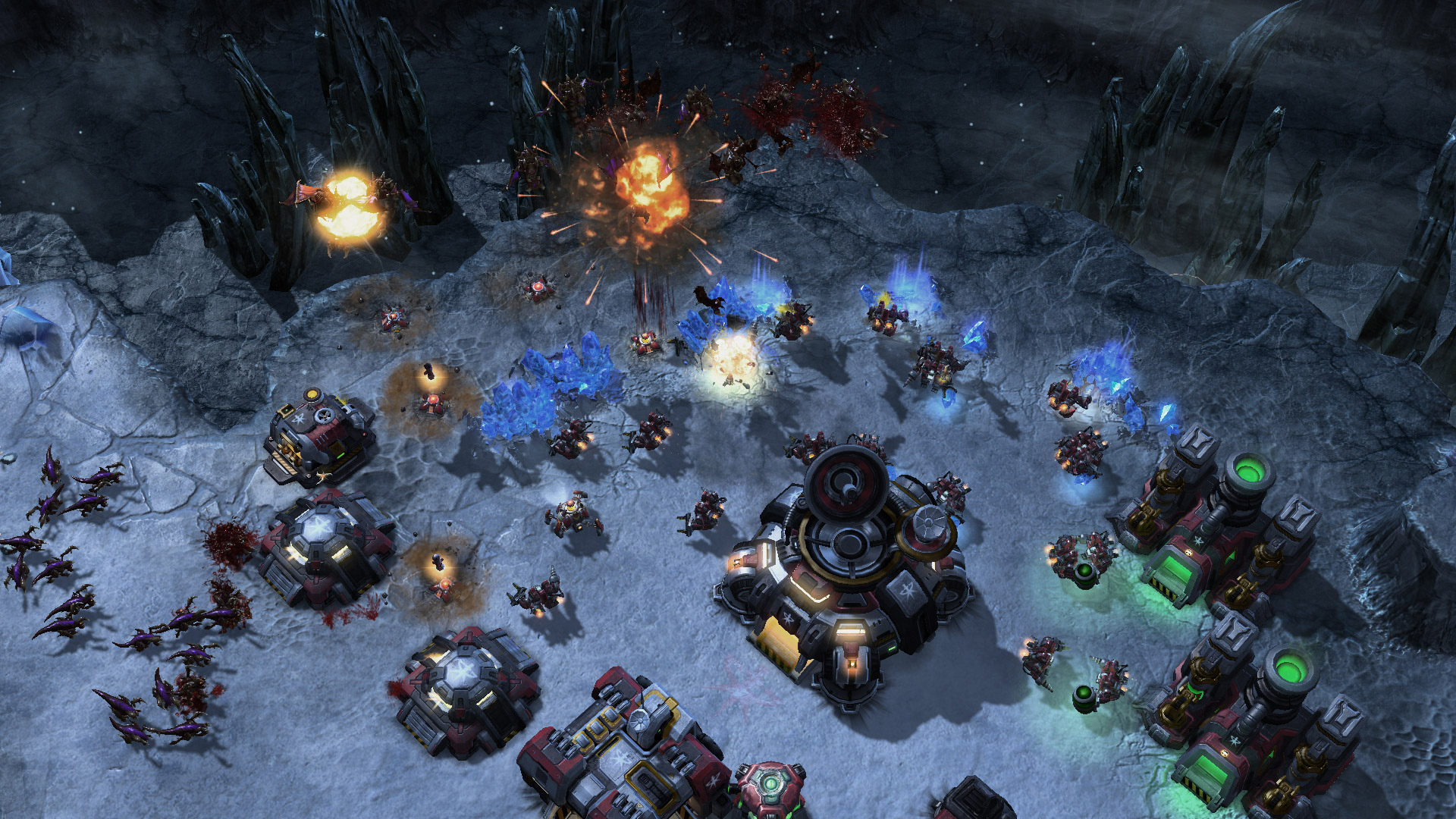
6. Starcraft II
Starcraft II takes the phenomenally successful real-time-strategising of the original Starcraft, puts it on steroids and then polishes it to that blinding Blizzard sheen. It slick, fast-paced action is what you want from your strategy gaming, then Starcraft II should be your first port of call.
Starcraft II is known mainly its vastly popular multiplayer component. But if you aren’t one for mastering keyboard shortcuts, or socialising with other humans, it’s worth noting that Starcraft II’s singleplayer campaign is one of the best in any RTS. The Wings of Liberty Terran Campaign alone features a whopping 27 missions, while the Heart of the Swarm and Legacy of the Void expansions offer whole new stories focusing on the Zerg and the Protoss factions.
The popularity of Real-Time-Strategy may have waned in recent years, but Starcraft II has gone a long way in keeping it alive. Its wide range of units, meticulously balanced factions, and array of different tactical approaches make it an enduring classic even as it approaches its tenth anniversary.
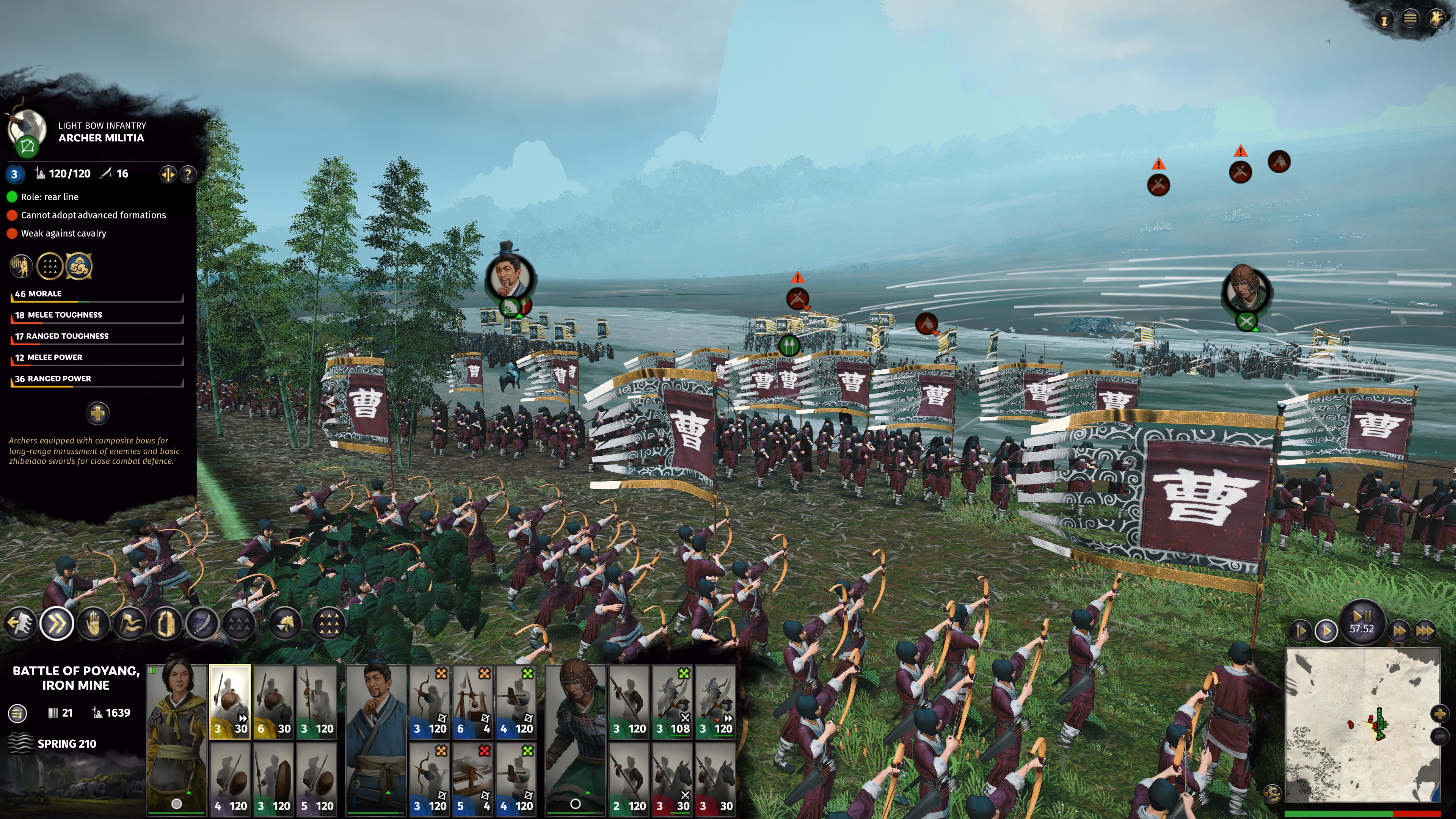
5. Total War: Three Kingdoms
It took the best part of a decade, but The Creative Assembly has finally delivered a Total War game that improves upon the mighty Shogun II. Three Kingdoms is a sumptuous, majestic strategy experience that overhauls much of the Total War formula without forgetting what made the original so great.
The key element that Total War adds over other previous entries in the series is nuance. To diplomacy, to espionage, and to storytelling. The world of Total War is no longer divided into hard factions. Instead, all the game’s characters are individually represented, and their relationships with one another can affect how well they perform in your faction, or even if they stay in your faction at all. Diplomacy, meanwhile, is a far more powerful tool than previously. Making friends and strong alliances can be crucially important in surviving the early game, but breaking them when it’s convenient later on can be extremely costly.
It’s Total War with a dose of Crusader Kings, but crucially, the massive battles that made the series name are still as spectacular and enjoyable as ever. If you’re looking for a balance between fierce action and genuinely thoughtful strategy, Three Kingdoms is undoubtedly your best bet.

4. Into the Breach
Into the Breach is about packing the biggest choices into the smallest package possible. It sees you control a group of time-travelling mechs attempting to save the world from an invasion of giant, insectoid aliens. Your job is to protect civilisation from the alien threat, preventing them from smashing cities like eggs, while also eliminating as many of those oversized bugs as possible.
You’re always outnumbered in Into the Breach, but you’re can also predict enemy attacks for the next turn. Hence, the game is about maximising your limited actions, using attacks to shunt enemies into other enemies, or to push them away from building they’re about to attack.
This shockwave mechanics is just one of several ideas that make Into the Breach so satisfying. The game is far tougher than it looks, and you may well fail your mission and even to save the world. All is not lost, however, as you get to send one of your mechs back in time to try again, will all its upgrades intact.

3. Sid Meier’s Civilization VI
Confession time. I’ve always found Civilization to be the strategy equivalent of a Rich Tea Biscuit, insofar as I can’t understand why so many people buy them because they’re so enormously dry and boring.
I’m unsure whether Civ VI simply showed me the error of my ways, or if it’s just much better communicating the ideas behind Civ than previous entries. Either way, it got it’s hooks in good. It broadly follows the same trajectory of every other Civ game, that of taking an ancient tribe that barely knows how to pick its nose without falling over and pushing them into becoming a spacefaring society.
What’s interesting is that Civ VI doesn’t radically change anything. Instead, it adds a litany of incremental features, from new districts that are built outside your city to make it slowly spread across the map, to more advanced diplomacy that enables AI factions to have secret goals that can only be unveiled using subterfuge. But the whole experience clicks together beautifully, resulting in the best Civilization yet, and the first one that’s succeeded in grabbing my attention.
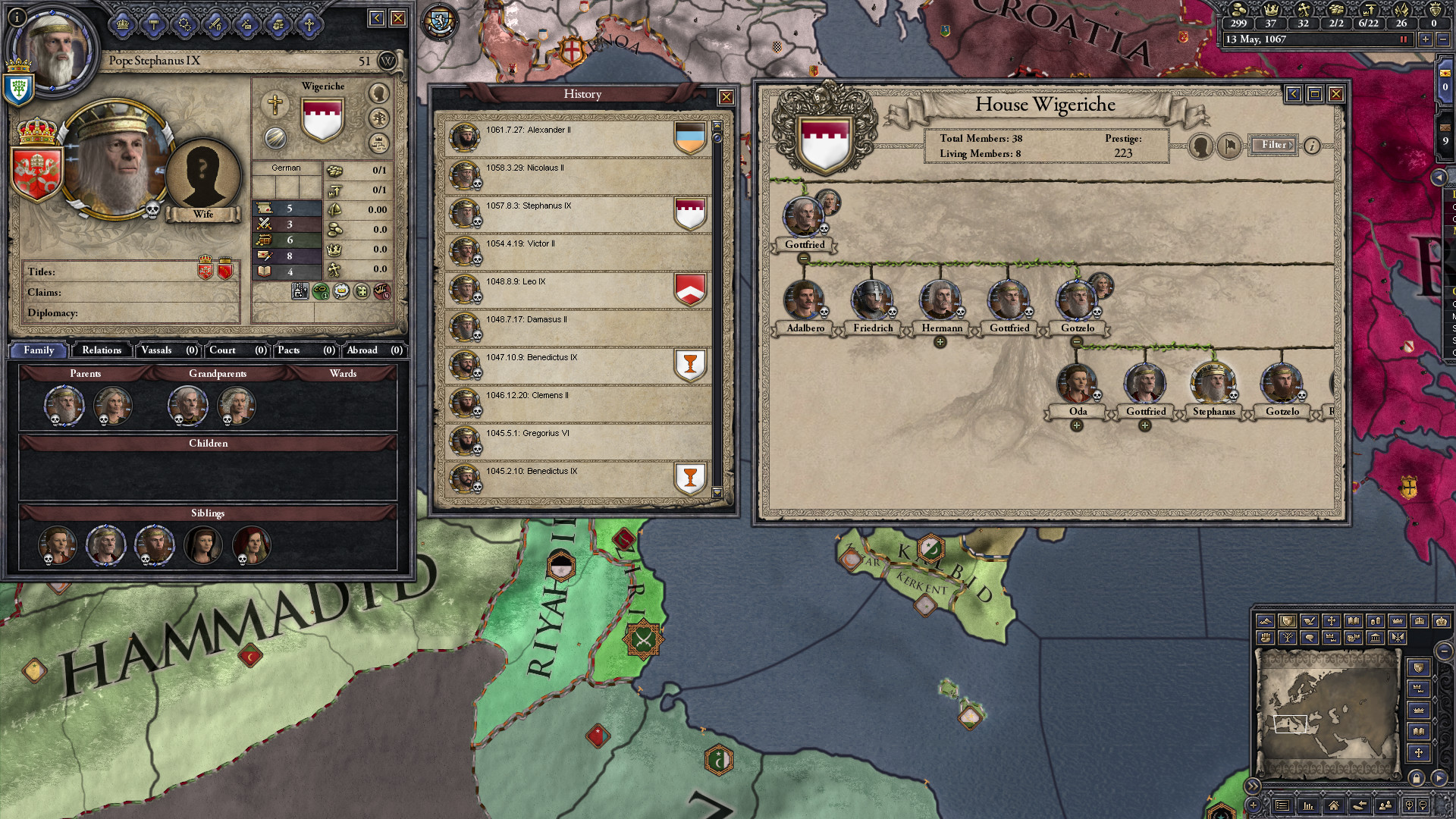
2. Crusader Kings II
The best game Paradox Interactive has ever made, and one of the most influential strategy games in recent years, Crusader Kings II is a grand strategy where the emphasis is less on the extent of your Kingdom’s borders, and more on the conniving bunch of incestuous berks that you call your family.
It’s a strategy game that adds character to the proceedings both literally and figuratively. Your medieval dynasty is both ruled and administrated by clearly drawn individuals who have their own unique personalities, governed by traits that change over time. Your ruler might be a kind and benevolent genius, a fat idiot, or a full-on psychopath. And even if they do fall into the former category, his descendants and half of his council might be various combinations of the latter two, and you may have to both concoct and foil all manner of secret plots simply to stay on the throne. Murdering your eldest son so that your youngest is first in line to the throne? Just another day in the world of Crusader Kings.
The importance of Crusader Kings can’t be underestimated. Not only is it far more colourful and vivid than most grand strategies, it also makes grand strategy fun even if you suck at it. You can spend an entire game stuck as a lowly Duke in some corner of Northwest England, and you’ll come out with countless stories of devious family dynamics, terrible marriages, and botched assassinations. Crusader Kings makes the simple act of keeping your current ruler alive utterly thrilling.
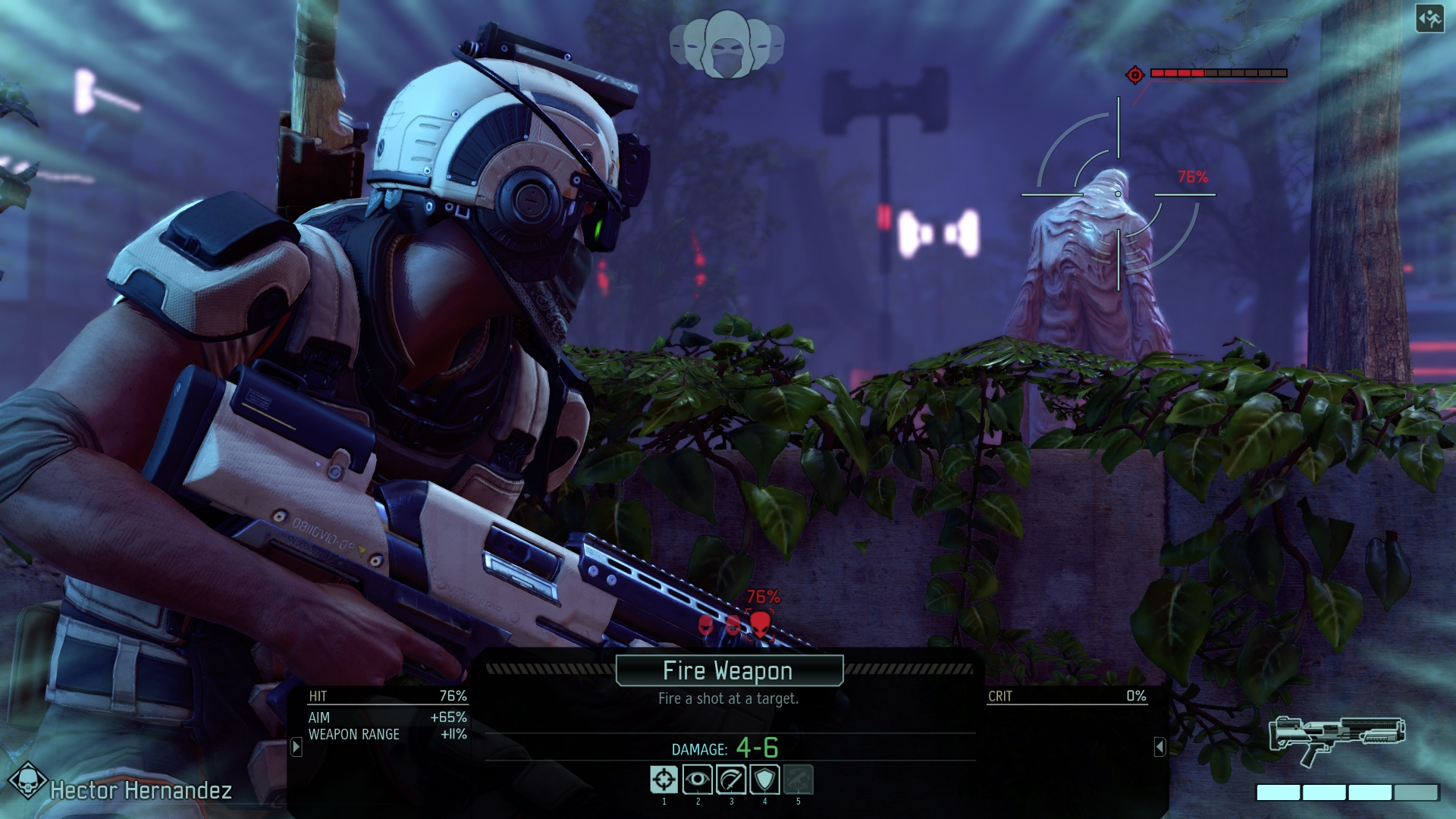
1. X-COM 2
Deciding between the 2012 X-COM reboot and its sequel is like choosing between my two favourite legs, but ultimately, X-COM 2 has a greater tactical breadth and depth that slightly edges the original’s more streamlined approach.
Either way, both games are built upon the same fundamental principles that make them so noteworthy. They’re ferociously challenging and uncompromising tactics games that force you to contend with an overwhelmingly superior alien threat, battling them in hyper-tense tactical scenarios, then taking their technology and using it to research more powerful weapons and abilities to turn in the fight in your favour. Playing X-COM is to face a constant barrage of difficult choices, whether to send your incomplete squad on a dangerous mission and risk losing them all, or ignore it and let ADVENT take one step closer to wiping you off the map.
What separates X-COM from other challenging strategy games, however, is two-fold. Firstly, like Crusader Kings, it’s as much a character drama as it is a sweeping global puzzle box. X-COM makes you care about the individuals in your squad, albeit in very different ways. Every action you perform is fraught with tensions, as you always know it could be the last for the Colonel-rank Assault character who’s been with you since the beginning.
The other element, of course, is how X-COM takes what is frankly a pretty demanding and inaccessible strategy game, then communicates it in a way that makes it not only compelling and easy to understand, but downright thrilling. The game is presented almost like an action movie, with clever use of cinematic camera angles when character move or take a shot. Then there’s the wonderfully rousing orchestral score. Try listening to X-COM 2’s deployment theme and not want to punch a Sectoid in the face afterward.
X-COM 2 is a triumph all around, and our pick the best strategy game of the last decade.

MSI MPG Velox 100R Chassis Review
October 14 2021 | 15:04







Want to comment? Please log in.